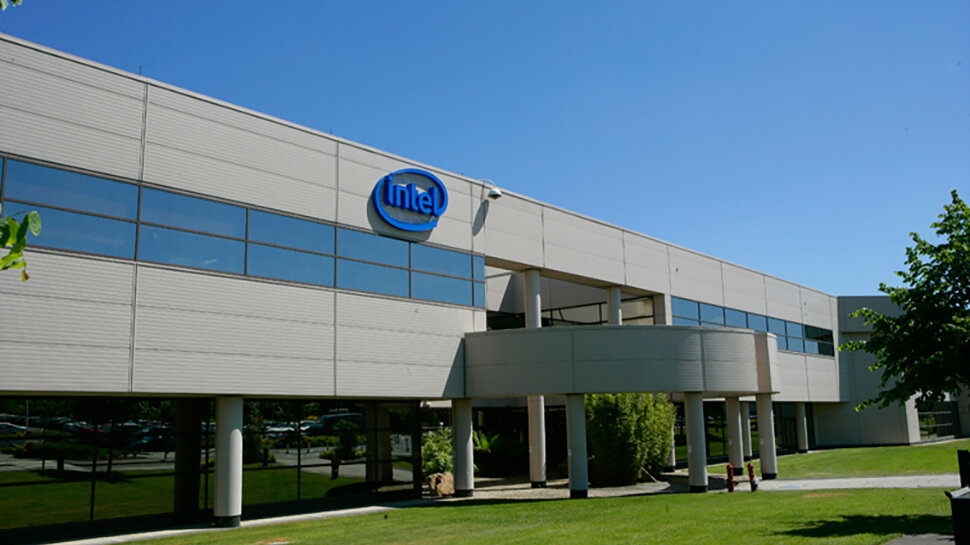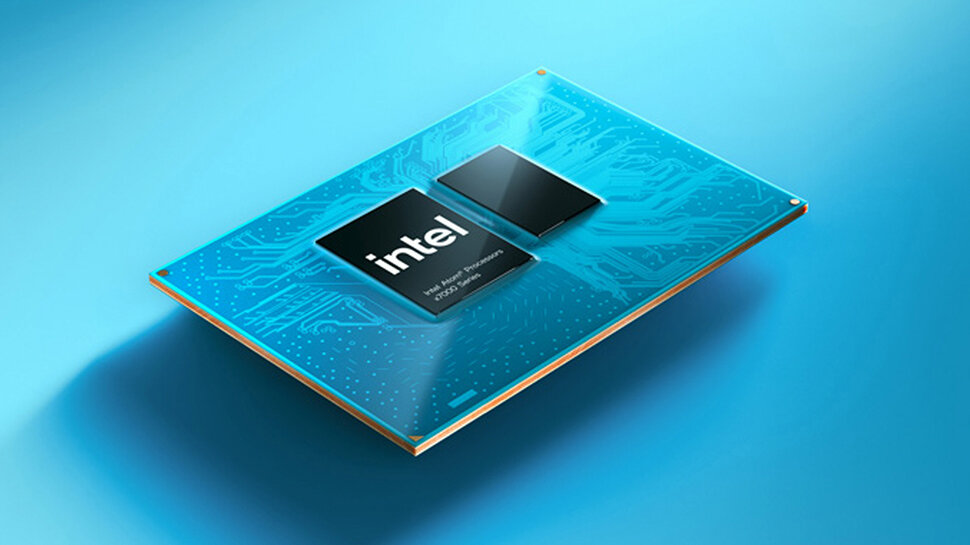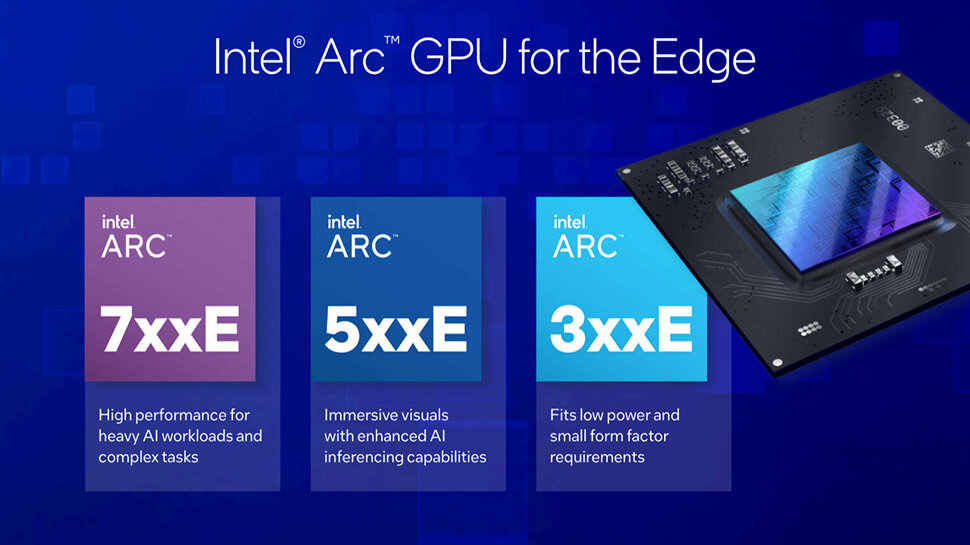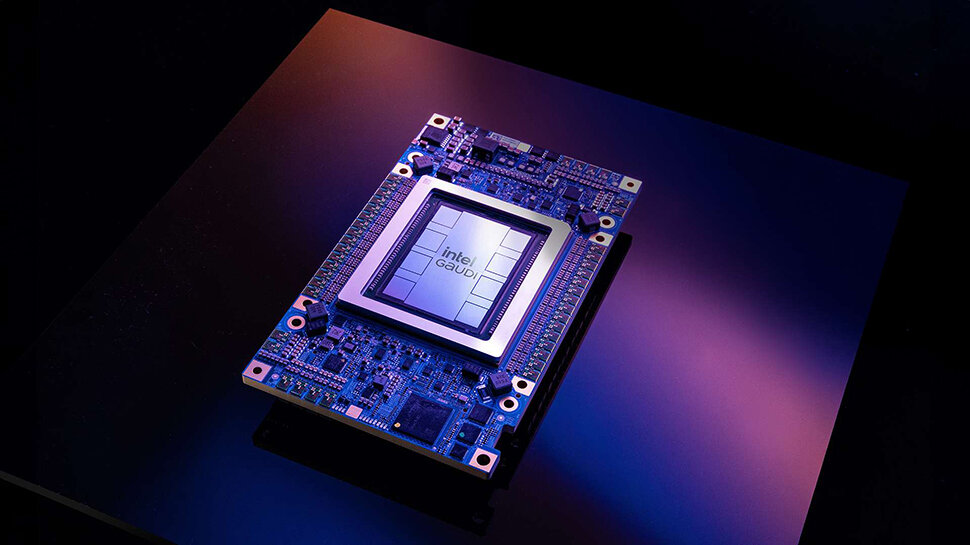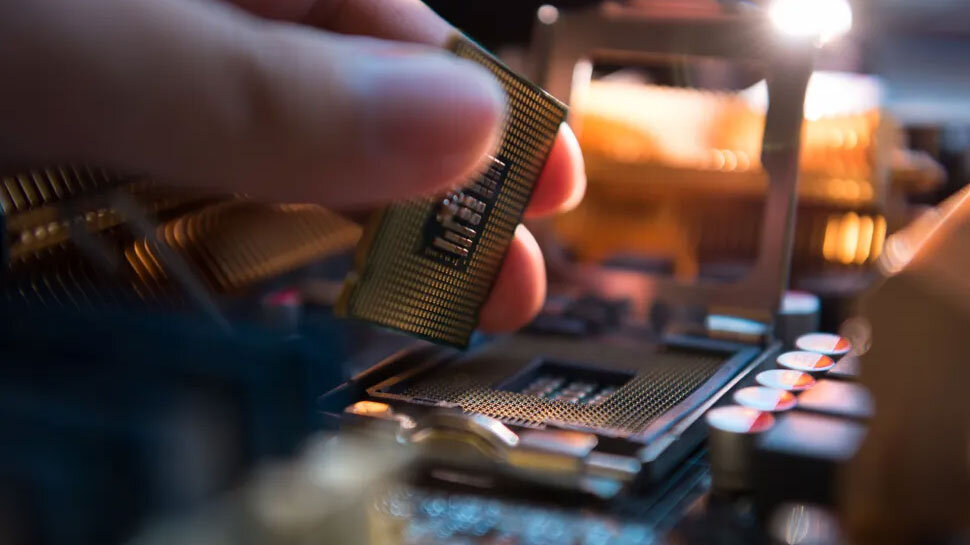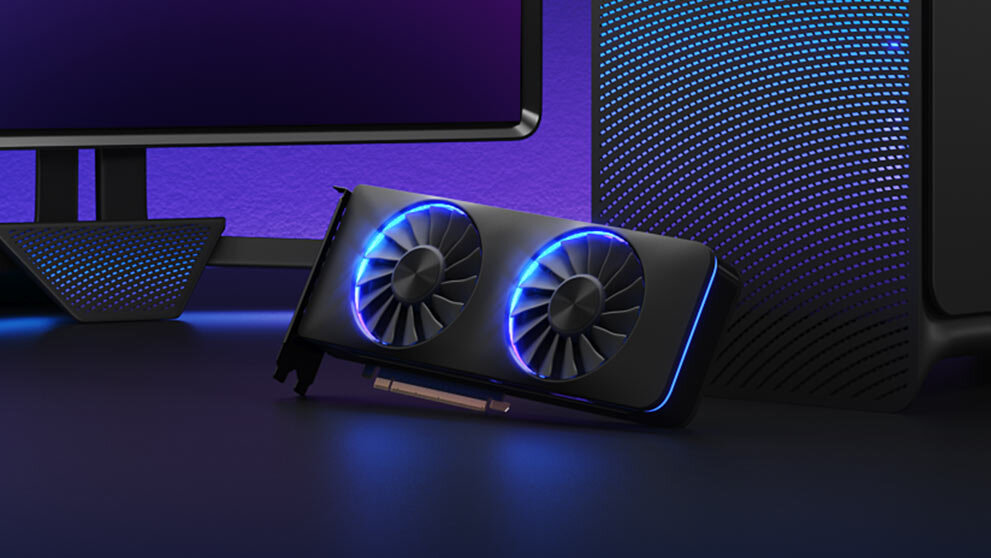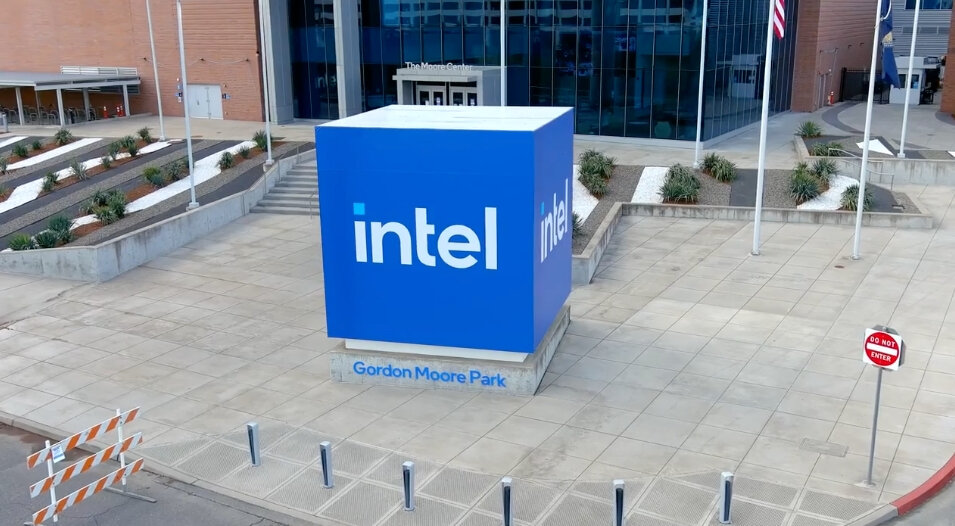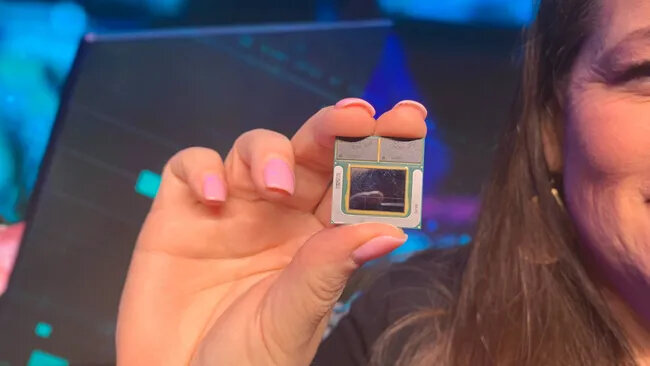Search the Community
Showing results for tags 'intel'.
-
A Gatchapon in Japan has been discovered which dispenses Intel CPUs with an asking price of as little as 500 Yen ($3) with mixed results. The video showcases one curious user on a visit to PC Ones, a computing store located in Osaka, Japan. For just 500 Yen, you're able to crank the handle and instead of a plastic toy, out will pop an Intel processor which may be fully functioning. Now, as you may expect, you're not exactly going to pop in a couple of dollars and receive one of the best processors on the market. The clip showcases that instead of the plastic orb was the Intel Core i7-8700 which is built on the LGA 1151 socket and was released back in 2017. Short of being a novelty, most surprising is the fact that the older i7 processor actually works as the lucky recipient was able to power it on in a makeshift test rig and boot up to the BIOS. You can't really ask for much more out of a CPU when you're spending less than the price of a cup of coffee on one. After some troubleshooting, they were able to install Windows 10 and then engage in some synthetic benchmarking through Cinebench R23 which showed the chip working in a more hampered capacity. While the CPU has six cores and 12 threads, the Task Manager screenshot revealed only five cores to be operational with 10 threads in use, likely from some pre-existing damage. More inventive ways to recycle hardware While this Gatchapon isn't the only quirky vending machine in Japan, or the region for that matter, it goes to show a creative way to dispose of older hardware without just resorting in a landfill. It's not known exactly which chipsets are available in the dispenser, but we're willing to bet that an older i7 or i9 are at the the upper echelon of what's inside. Chances are, when you crank the handle, you could receive an ancient chipset that has no functionality. But that's what Gatchapon is all about, after all. Put in a couple of dollars and you never know what you could win. If you ever find yourself cash-strapped for your next upgrade and you just so happen to be in Japan, you could win yourself a processor which normally sells for around the $200 mark, not too bad a gamble at all. This CPU capsule machine is an exception to what we generally see happen to old hardware which is thrown away, though, and gamifying old gear could be a way to cut down on the amount of silicon we see slung out, especially if there's any chance it could keep on ticking over inside a budget build. US retailers like MicroCenter could learn a thing or two from this operation. You might also like Best cheap processor deals in 2024The fastest CPUs in 2024How to choose the right CPU for you View the full article
-
Intel issues a state regarding stability issues concerning 13th and 14th Generation CPUs on 600-and 700-series motherboards made by respective manufacturers. View the full article
-
- intel
- motherboards
-
(and 2 more)
Tagged with:
-
Intel has launched a new AI processor series for the edge, promising industrial-class deep learning inference. The new ‘Amston Lake’ Atom x7000RE chips offer up to double the cores and twice the higher graphics base frequency as the previous x6000RE series, all neatly packed within a 6W–12W BGA package. The x7000RE series packs more performance into a smaller footprint. Boasting up to eight E-cores it supports LPDDR5/DDR5/DDR4 memory and up to nine PCIe 3.0 lanes, delivering robust multitasking capabilities. Intel says its new processors are designed to withstand challenging conditions, enduring extreme temperature variations, shock, and vibration, and to operate in hard-to-reach locations. They offer 2x SATA Gen 3.2 ports, up to 4x USB 3.2 Gen 2 ports, a USB Type-C port, 2.5GbE Ethernet connection, along with Intel Wi-Fi, Bluetooth, and 5G platform capabilities. Embedded, industrial, and communication The x7000RE series consists of four SKUs, all suitable for embedded, industrial, and communication use under extended temperature conditions. The x7211RE and x7213RE have 2 cores and relatively lower base frequencies, while the x7433RE has 4 cores, and the x7835RE has 8 cores with higher base frequencies. All four SKUs support a GPU execution unit count of either 16 or 32, and Intel's Time Coordinated Computing and Time-Sensitive Networking GbE features. The x7000RE offer integrated Intel UHD Graphics, Intel DL Boost, Intel AVX2 with INT8 support, and OpenVINO toolkit support. Intel says the chips will allow customers to easily deploy deep learning inference at the industrial edge and in smart cities, and “enhance computer vision solutions with built-in AI capabilities and ecosystem-enabled camera modules” as well as “capture power- and cost-efficient performance to enable latency-bounded workloads in robotics and automation.” More from TechRadar Pro Intel bets on a secret weapon to beat AMD in some AI workloadsIntel unveils 288-core Leviathan 5th-gen Xeon CPUIntel could move away from regular CPU releases View the full article
-
OpenCL is an open-source library for running compute tasks on GPUs. OpenCL enables 3D hardware acceleration for supported applications (i.e. LibreOffice) using the GPU hardware (i.e. Intel iGPU) you have installed on your computer. So, unless OpenCL is installed, OpenCL-supported applications (i.e. LibreOffice) will not have hardware acceleration enabled and may not perform well (i.e. UI might be laggy) as a result. So, it’s a good idea to install OpenCL on your newly installed Fedora 40 (or later) desktop operating system. In this article, I am going to show you how to install OpenCL for your Intel iGPU on Fedora 40 (or later). Table of Contents Updating DNF Package Repository Cache on Fedora Installing OpenCL for Intel GPU on Fedora Checking if OpenCL is Working on Fedora Conclusion References Updating DNF Package Repository Cache on Fedora To update the DNF package repository cache on Fedora 40 (and future versions), run the following command: $ sudo dnf makecache Installing OpenCL for Intel GPU on Fedora To install OpenCL libraries for Intel GPUs, run the following command: $ sudo dnf install intel-compute-runtime intel-opencl To confirm the installation, press Y and then press <Enter>. OpenCL for Intel GPU is being installed. It will take a few seconds to complete. OpenCL libraries for Intel GPU should be installed on your Fedora system. For the changes to take effect, restart your computer with the following command: $ sudo reboot Checking if OpenCL is Working on Fedora To check if OpenCL is working on your Fedora system, run the command below: $ clinfo -l If OpenCL is working, your Intel GPU should be listed as an OpenCL device as shown in the screenshot below. Conclusion In this article, I have shown you how to install OpenCL for Intel GPU on your Fedora 40 (or later) operating system so that OpenCL-supported applications can perform better using OpenCL hardware acceleration on Fedora. References GPGPU – ArchWiki View the full article
-
In September 2023, Intel unveiled its 288-core Xeon CPU and, at the end of February 2024, began previewing it for the AI processing industry. Given the codename "Sierra Forest", that chip will be available in the second half of this year, while customers will have to wait until next year to get their hands on its more powerful "Granite Rapids" sibling. Intel has now rebranded its Xeon family of processors, replacing the "Xeon Scalable" name, which first hit the market in 2017 with the Xeon Platinum 8100 series, with "Xeon 6.” This new brand will include the all-efficiency (E) Sierra Forest chip and the performance (P) Granite Rapid one. Amplify performance signals The Sierra Forest data center chip is the first with an architecture comprised entirely of efficiency cores (E-cores), designed to deliver boost performance of 5G workloads by 2.7 times per rack, according to Intel. When it arrives, Granite Rapids (with P-cores) will build upon the doubled vRAN workload processing capacity offered by Sapphire Rapids and increase performance even further via Intel AVX and vRAN Boost. Both Granite Rapids and Sierra Forest variants share the same platform (including the chiplet-based design, sockets. memory, and firmware) and thus will use the shared Xeon 6 nomenclature, a move which Intel hopes will make everything clearer for customers. The company says the “evolved” Xeon 6 branding will “tell a united Intel Xeon story,” “Ease customer navigation,” and “Amplify performance signals”. Intel’s existing "Emerald Rapids" 5th-Gen Xeon Scalable Processor models won’t see a rebrand. It has been said with the current-gen Xeon product stack that Intel’s branding can be “more than a little confusing”, and the company obviously feels it’s best to start afresh with the new Xeon 6 brand and focus on making things simpler going forward. More from TechRadar Pro Intel bets on a secret weapon to beat AMD in some AI workloadsIntel unveils 288-core Leviathan 5th-gen Xeon CPUIntel could move away from regular CPU releases View the full article
-
Intel outlined its use of AI tools in chip design, which were used to optimize SoC layouts starting with Meteor Lake and slashed the time needed for some of the firm’s semiconductor design processes from six weeks to just minutes. It detailed plans to increase the use of AI design tools in future architectures. View the full article
-
Two years after the debut of its Arc Alchemist GPUs, Intel is launching six new Arc products, but these are designed for edge/embedded systems. These edge systems, which process data near the source to reduce latency and bandwidth use, are becoming increasingly essential in areas such as IoT, autonomous vehicles, and AI applications. As Intel says, “AI at the edge is exploding with new use cases and workloads being developed daily. These AI workloads often require a high degree of parallel processing and memory bandwidth for peak performance, dedicated hardware, optimized architecture for compute efficiency, and reduced latency with faster results for real-time processing. A discrete GPU may be the ideal solution for edge AI use cases requiring high performance and complex model support.” Six SKUs The new Arc on edge GPUs are built on Intel's highly scalable Intel Xe-core architecture and support AI acceleration, visual computing and media processing. Using the OpenVINO toolkit developers can deploy AI models across Intel hardware. The Arc on edge offerings have a number of benefits, including reduced latency, improved bandwidth efficiency and better privacy and security. For high performance and to handle heavy AI workloads and expansive use cases such as facial recognition and generative conversational speech, there’s the 7XXE. For immersive visual experiences and enhanced AI inferencing capabilities, there’s the 5XXE, and for low power and small form factor requirements, Intel has the 3XXE. There are six SKUs available – the A310E and A3503 with 6 Xe-cores, the A370E and A380E with 8 cores, and the A580E and A750E with 28 cores. The A310E, A3503 and A370E have 4GB of GDDDR6 memory with 112GB/s memory bandwidth. The A380E has 6GB with 186GB/s bandwidth, while the A580E and A750E’s memory and memory bandwidth are unknown for now. Intel says only that it is “in planning”. There’s also no launch date for those two either, just TBD. The other four SKUs will be available this month. Intel Arc GPUs are built to be paired with Intel Core processors, from 10th Gen upwards and Intel Xeon W-3400 and W-2400. A number of products featuring the new Arc GPUs are set to be released in the coming months from Intel partners including from ADLINK, Advantech, Asus, Matrox and Sparkle. (Image credit: Intel) More from TechRadar Pro Intel bets on a secret weapon to beat AMD in some AI workloadsEdge computing spending set to skyrocket as AI takes holdIntel could move away from regular CPU releases View the full article
-
At Intel Vision 2024, Intel launched its Gaudi 3 AI accelerator which the company is positioning as a direct competitor to Nvidia's H100, claiming that it offers faster training and inference performance on leading GenAI models. The Gaudi 3 is projected to outperform the H100 by up to 50% in various tasks, including training time, inference throughput, and power efficiency. Building on the performance and efficiency of the Gaudi 2 AI accelerator, Gaudi 3 reportedly boasts 4x AI compute for BF16, a 1.5x increase in memory bandwidth, and 2x networking bandwidth for massive system scale out, compared with its predecessor. Superior performance Manufactured on a 5nm process, Gaudi 3 features 64 AI-custom and programmable TPCs and eight MMEs capable of 64,000 parallel operations. It offers 128GB of memory (HBM2e not HBM3E), 3.7TB of memory bandwidth, and 96MB of on-board SRAM for processing large datasets efficiently. With 24 integrated 200Gb Ethernet ports, it allows for flexible system scaling and open-standard networking. Intel claims Gaudi 3 is superior to H100 across various models, including 50% faster training time on Llama 7B and 13B parameters, as well as GPT-3 175B models. Additionally, there is a 50% increase in inference throughput and 40% greater power efficiency on Llama 7B and 70B parameters, and Falcon 180B models. Intel says Gaudi 3 also outperforms H200 in inferencing speed on Llama 7B and 70B parameters, and Falcon 180B parameter models by 30%. As these are Intel benchmarks, feel free to take them with a pinch of salt. Tom's Hardware notes, "At the end of the day, the key to dominating today’s AI training and inference workloads resides in the ability to scale accelerators out into larger clusters. Intel’s Gaudi takes a different approach than Nvidia’s looming B200 NVL72 systems, using fast 200 Gbps Ethernet connections between the Gaudi 3 accelerators and pairing the servers with leaf and spine switches to create clusters." Justin Hotard, Intel executive vice president and general manager of the Data Center and AI Group, said, “In the ever-evolving landscape of the AI market, a significant gap persists in the current offerings. Feedback from our customers and the broader market underscores a desire for increased choice. Enterprises weigh considerations such as availability, scalability, performance, cost, and energy efficiency. Intel Gaudi 3 stands out as the GenAI alternative presenting a compelling combination of price performance, system scalability, and time-to-value advantage.” Gaudi 3 will be available to OEMs in the second quarter of 2024, with general availability expected in the third quarter. (Image credit: Intel) More from TechRadar Pro Intel bets on a secret weapon to beat AMD in some AI workloadsIntel reveals new spin-off company to bring generative AI learning to businessesNvidia's fastest AI chip ever could cost a rather reasonable $40,000 View the full article
-
New figures have claimed Intel CEO Pat Gelsinger saw a significant increase in his earnings in 2023, but it was still only just over half of what Lisa Su, CEO of rival company AMD, made. According to MarketWatch, Gelsinger's total compensation in 2023 was $16.86 million, a 45% increase from his 2022 earnings of $11.61 million, as revealed in Intel's 2024 proxy statement. In contrast, Su's total compensation for 2023 was $30.35 million, barely above her 2022 compensation of $30.22 million. The increase in Gelsinger's pay came despite an 18% drop in his salary to $1.07 million. However, the value of his stock awards increased to $12.43 million, and his non-equity incentive plan compensation jumped to $2.89 million. On the other hand, Su's salary was $1.2 million, and she received $21.85 million in stock awards and $5.84 million in options. What about Nvidia's CEO? Intel's stock soared 90.1% in 2023, while AMD's stock shot up 127.6%. However, as MarketWatch points out, since Gelsinger became CEO, Intel's stock has tumbled 28.5%, while AMD shares have charged up 92.5%. Interestingly, Gelsinger's 2023 compensation was significantly lower than his 2021 total compensation of $178.59 million, which included "new-hire equity awards of a significant magnitude" of $140.43 million. This was done to ensure Intel could hire "the best leader possible." Meanwhile, Nvidia CEO Jensen Huang's total compensation for the fiscal year that ended in January 2023 was $21.36 million, down from $23.74 million the previous year. With Nvidia's stock skyrocketing by 238.9% in 2023, it will be interesting to see his compensation for the latest fiscal year. As Tom's Hardware points out, "Impressive stock gains have already propelled the leader of the green team into becoming the world's 21st richest person." More from TechRadar Pro First reviews of AMD's fastest ever processor reveal a frightening prospectAMD CEO offers to help AI Startup that uses Radeon 7900 XTX GPUsIntel ushers in the enterprise AI PC era View the full article
-
Intel has unleashed a new version of its XeSS upscaling tech that rivals Nvidia DLSS and AMD FSR for speeding up frame rates in PC games. Intel XeSS 1.3 is fresh on the scene, although note that it’s still in preview testing right now, with Team Blue claiming some decent performance boosts compared to XeSS 1.1 or 1.2. On a PC with an Arc A750 GPU, Intel discovered a particularly impressive jump in frames per second (fps) with Diablo 4 at 1440p resolution (with high details and ray tracing on). Without XeSS, the action RPG ran at 37 fps, but with XeSS that increased to 71 fps – and with the new XeSS 1.3 the game hit 91 fps. That’s a performance gain of almost 30% over the previous incarnation of XeSS. Other games have more modest, but still worthwhile, improvements, in the order of around 5 extra fps, a boost of around 10%. Intel also demonstrated integrated graphics with the Arc GPU in an Intel Core Ultra processor, running games at 1080p with medium details. On average, Team Blue found XeSS 1.3 delivered 8% more fps compared to previous versions. Not just faster, but better-looking upscaling too XeSS 1.3 isn’t just about faster frame rates for your GPU, though, as Intel has been fine-tuning the image quality as well. The company tells us that version 1.3 of its upscaling tech benefits from an updated model that provides more detail in the image, better anti-aliasing (smoothing of jaggies) and less in the way of ghosting. All in all, it seems like a sizeable stride forward for XeSS, but Intel will need to keep pushing with its upscaling technology – because AMD and Nvidia most definitely aren’t standing still. Indeed, Nvidia just released DLSS 3.7 which offers similar improvements to what we see here from Intel (less ghosting, better temporal stability). And AMD may have even bigger moves underway – possibly finally bringing AI into the mix with FSR. (Note that both Intel and Nvidia already use hardware-accelerated AI cores to pep up their respective upscaling technologies). Via Neowin You might also like What is a graphics card? Here's everything you need to knowThese are all the best cheap graphics card dealsNeed a 1440p graphics card? These are the top options View the full article
-
Forum Statistics
43.9k
Total Topics43.4k
Total Posts
.png.6dd3056f38e93712a18d153891e8e0fc.png.1dbd1e5f05de09e66333e631e3342b83.png.933f4dc78ef5a5d2971934bd41ead8a1.png)


